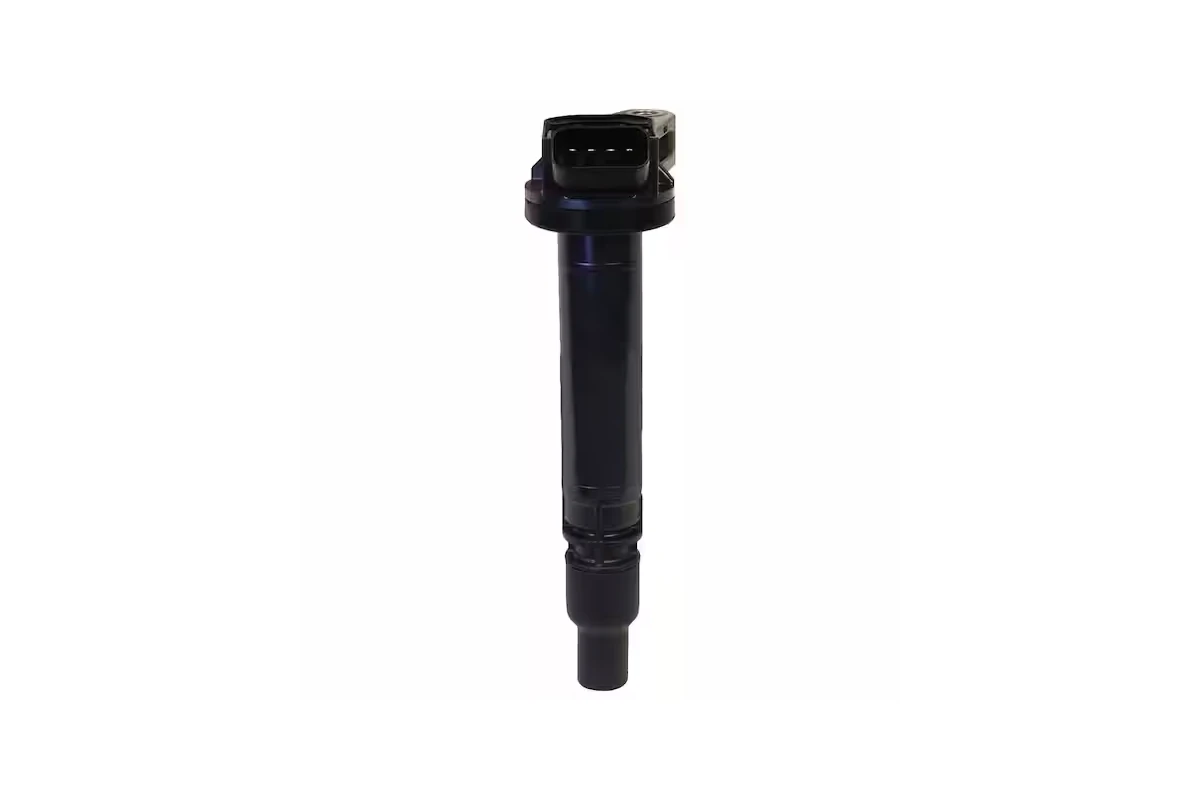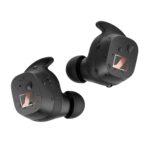Ignition coils play a crucial role in a vehicle’s ignition system by converting low voltage from the battery into high voltage needed to create a spark. Most coils do not have an internal resistor, but some do. Knowing which type you have is important for proper installation and performance and efficiency.
There are four main types of ignition coils: 6-volt, 12-volt, internally resisted, and externally resisted. Coils without an external resistor have one built into the coil itself. This affects how they should be wired and used in your vehicle’s electrical system.
Determining if a coil has an internal resistor can be tricky. It often requires testing with a multimeter or consulting the manufacturer’s specifications. Understanding your coil type ensures proper installation and optimal engine performance.

Identifying Coils with Internal Resistors
Why Internal Resistors Matter
Coils with internal resistors are designed to provide a more consistent voltage to the spark plugs, which results in several benefits:
- Improved Engine Performance: By ensuring a stable voltage, these coils help your engine run more smoothly and efficiently.
- Extended Spark Plug Life: A consistent voltage reduces wear and tear on your spark plugs, helping them last longer.
- Reduced Emissions: A more efficient burn leads to fewer emissions.
Methods for Identifying an Internal Resistor
There are a few ways to determine if your coil has an internal resistor:
1. Visual Inspection
- Labeling: Some coils are clearly labeled as having an internal resistor. Look for phrases like “internal resistor” or “ballasted coil.”
- Physical Appearance: Coils with internal resistors may have a slightly different appearance than those without. However, this is not a reliable method, as the appearance can vary widely.
2. Measuring Resistance
- Using a Multimeter: This is the most reliable method. Set your multimeter to the ohms setting and touch the probes to the coil’s primary terminals (typically marked “+” and “-“).
- If the reading is between 3 and 4 ohms, the coil likely has an internal resistor.
- If the reading is lower (around 1.5 ohms), it likely does not.
3. Checking the Vehicle’s Wiring Diagram
- Consult the Manual: Your vehicle’s wiring diagram should indicate whether an external ballast resistor is present. If not, and the coil is designed for a 12V system, it likely has an internal resistor.
Important Considerations
- External Ballast Resistors: If your vehicle has an external ballast resistor, you should use a coil without an internal resistor. Using two resistors can cause problems with spark delivery.
- Replacement Coils: When replacing a coil, make sure to match the type of coil (with or without an internal resistor) to the original.

Table: Common Coil Resistance Values
| Coil Type | Resistance (Ohms) |
|---|---|
| 6 Volt Coil | 1.25 – 2 |
| 12 Volt Coil (No Ballast) | 2.5 – 3.5 |
| 12 Volt Coil (With Ballast) | 1.25 – 2 |
Key Takeaways
- Ignition coils convert low voltage to high voltage for spark plugs
- Coils can be internal or external resistor types
- Proper coil identification is crucial for correct installation and performance
Understanding Ignition Coils and Resistors
Ignition coils and resistors are key parts of a car’s ignition system. They work together to create the spark that starts the engine. Let’s explore how these components function and interact.
Components of the Ignition System
The ignition system has several important parts:
- Ignition coil
- Distributor
- Spark plugs
- Battery
- Ignition switch
The ignition coil is like a transformer. It changes low voltage from the battery into high voltage for the spark plugs. This high voltage is needed to make the spark that ignites the fuel in the engine.
Distributors send the high voltage to each spark plug at the right time. Spark plugs create the actual spark in the engine cylinders. The battery provides the initial power. The ignition switch turns the system on and off.

The Role of Resistance in Coils
Resistance in ignition coils helps control the flow of electricity. This is important for several reasons:
- It protects the points from burning out
- It regulates current to the coil
- It helps the coil work better with electronic ignition systems
Coils can have internal or external resistance. Internal resistance is built into the coil. External resistance uses a separate resistor outside the coil.
The amount of resistance matters. Too much can weaken the spark. Too little can damage the coil or other parts. Most systems need about 1.5 to 3 ohms of total resistance.
Differentiating Between Internal and External Resistors
There are two main types of resistor setups for ignition coils:
- Internal resistor coils
- External resistor coils
Internal resistor coils have the resistance built in. They don’t need an extra resistor. These coils are simpler to install. They work well in many modern cars.
External resistor coils need a separate resistor. This might be a resistor wire or a ballast resistor. The extra resistor gives more control over the resistance. It can be easier to replace if it fails.
To tell if a coil has an internal resistor you can measure its resistance. A 12-volt coil with internal resistance should measure about 3 ohms. Coils that need an external resistor will have lower resistance.
Diagnostic Steps and Techniques
Checking if a coil has an internal resistor involves specific tests. These methods help identify resistance levels and voltage patterns. They also assess the coil’s overall condition.
Measuring Primary Resistance
To measure primary resistance, use a multimeter. Set it to ohms and connect the leads to the coil terminals. Most coils do not have an internal resistor. They do have some resistance due to wire type and windings.
Check the resistance reading against the specs for your vehicle. Each coil has unique specs. If the reading is outside the range, the coil may be faulty.
For accurate results, disconnect the coil from the ignition system. This prevents other components from affecting the reading.
Identifying Voltage Variations
Voltage tests can reveal if a coil has an internal resistor. Use a voltmeter to check voltage at the coil’s positive terminal.
Turn the ignition switch to “ON” but don’t start the engine. A 12-volt test light can also work for this test.
If voltage drops significantly with the engine running, it may indicate an internal resistor. No drop might mean an external resistor or a non-resistor coil.
Compare the operating voltage to the battery voltage. A large difference can point to resistance in the circuit.
Assessing Coil Condition for Faults
Visual inspection is the first step in coil assessment. Look for cracks, leaks, or signs of overheating.
Test spark output using an ignition spark tester. A weak or no spark can indicate coil problems.
For multi-coil systems, swap coils between cylinders. If the misfire moves, the coil is likely faulty.
Check for voltage drop across the coil. Too much drop can cause weak spark or misfires.
Inspect related components like the distributor and spark plug gaps. Issues here can stress the coil and cause premature wear.
Frequently Asked Questions
Understanding ignition coils and their resistors can be tricky. These questions will help clear up common confusion about coil resistors and wiring.
How can I determine if my ignition coil includes an internal resistor?
You can check if a coil has an internal resistor by measuring its resistance. Use an ohmmeter to test the primary terminals. A coil with an internal resistor will measure about 3 ohms. Coils without internal resistors usually measure around 1.5 ohms.
What methods are available to measure the internal resistance of an ignition coil?
The main method is using an ohmmeter. Connect it to the coil’s primary terminals. Make sure the ignition is off before testing. Some digital multimeters have a specific setting for testing coils.
Is it necessary to use a ballast resistor with every ignition coil?
Not all coils need a ballast resistor. Coils with built-in resistors don’t need an external one. Older cars often use external resistors. Check your car’s manual or the coil specs to be sure.
What are the differences between ignition coils with internal resistors and those requiring external resistors?
Internal resistor coils have the resistor built in. They’re easier to install. External resistor coils need a separate resistor in the circuit. They offer more flexibility in resistor choice.
Can you describe the process for wiring an ignition coil that has an internal resistor?
Wiring an internal resistor coil is simple. Connect the positive terminal to the ignition switch. Link the negative terminal to the distributor. Ground the coil case to the engine block. No extra resistor is needed.
How does using an ignition coil with an internal resistor compare to one with an external resistor in terms of performance?
Both types can perform well if matched to the car’s system. Internal resistor coils are more compact. External resistor setups allow for easier resistor replacement. Performance differences are often minimal in properly tuned systems.







